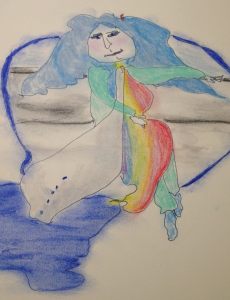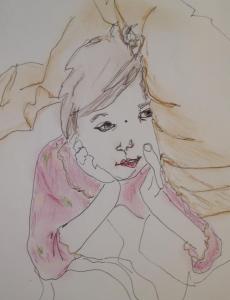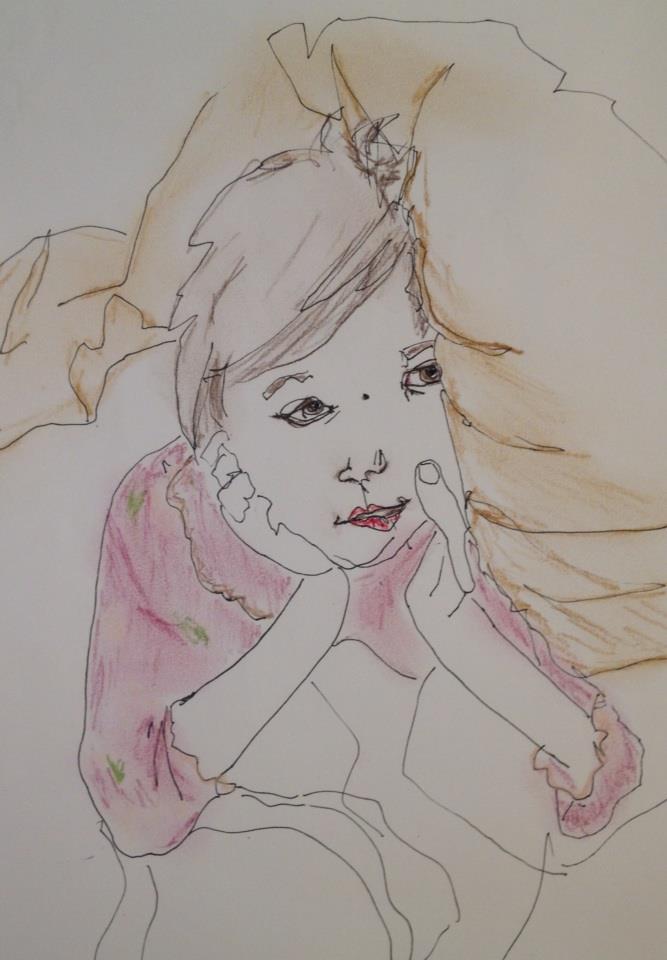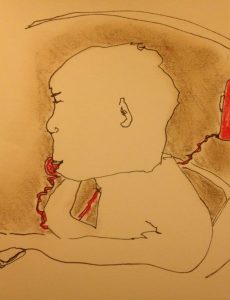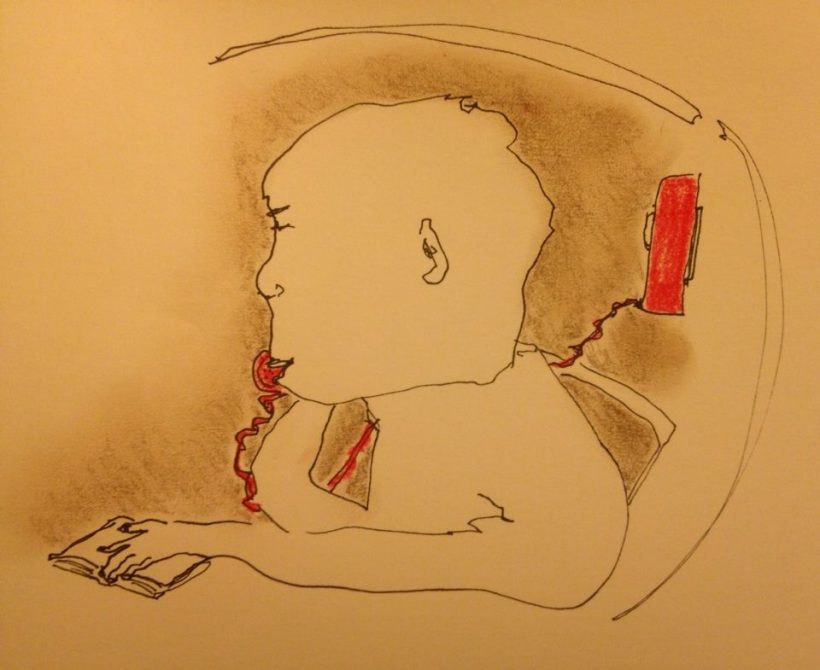A couple of years ago, my then 9 year old daughter and I rode BART into Oakland for a Warriors game. She was going to perform at half time with her dance team and about a hundred other dancers from around the Bay Area. Inside the train, most of the seats were occupied, and anyways, she preferred the excitement of standing and swaying with the train’s motion, rather than sitting down. So we stood in the open area near the doors where bikers have space to prop their bikes against the wall and where during rush hour, strangers stand together in forced intimacy. This was before peak rush hour, though, so we stood in an open space, my one hand resting on her shoulder and my other hand holding the bar overhead to steady us as the train started and stopped at each station along the way.
At one stop, an elderly, mildly stooped Chinese man stepped through the doors onto the train, holding the hand of a small boy– assumedly his grandson– who looked about four years old. The man spoke in Chinese to two women seated in the door-side seats that are reserved for elderly people or those who are pregnant or disabled. Certainly, neither of the seated women spoke Chinese, but the man’s inquiring, polite tone and hand gestures clearly communicated that he was requesting that they move so that he could sit in those two seats with his grandson. One of these seated women was loaded down with two suitcases and another bag, whereas the second woman merely held a purse. Both of the women looked to be between 55-65 years old, and both of them were white.
After registering the man’s request, the woman with the purse in her lap shook her head and said “No” and continued to stare straight ahead. On the other hand, the woman with the multiple pieces of luggage got up and moved to another seat nearby.
The man stood for another beat and then, because the woman with the purse still occupied one of the seats, moved on to another car to find two seats where he could sit down with his grandson.
As we witnessed this interaction a few feet from us, a black woman standing near us with her bicycle, spoke up to defend the Chinese man, telling the woman she should have moved to make space for this man and his grandson. She pointed out the sign that stated who the seats are reserved for, and she said the woman should be ashamed of herself for not getting up. “You’re old enough to know better,” she said. “You should act your age.” Then she said that she was sure there were other good people in the train car who would agree with her and who would speak up in support of what was right.
I, among a car full of strangers, continued to hold my daughter’s shoulder and the bar above me, and I continued to hold my tongue.
The black woman said, “The nerve of some people!” and took out her phone and made a verbal note to herself stating her name and the date and the BART stop we were near and her intention to record a podcast later that day on the topic of white privilege. Her voice, clear and contained, projected throughout our half of the car, and she spoke the words “white privilege” with emphasis on the consonants and a pause between the two words.
I felt hot and a little sweaty and my insides shifted around. I was being called upon to speak up for what was right, but I didn’t want to have to do it. I wanted out. Silence was easiest. The black woman was angry, and I have a fear of angry black women. The white woman was gray haired, as I am, and slightly older than I, and I felt a little badly for her, being shamed in public. I guess I identified with her. I too have a cushion of privilege which has protected me since birth from having to experience racism or empathize with black and brown people. Because of that cushion, I did not have to notice the unfairness, the unkindness of what was going on before me. It was easier to ignore the situation and safer to just stay out of it.
A week or two later, I was driving into San Francisco and was passing Oakland on the Maze, and streaming out from the attic windows of one of the old Victorian houses along the freeway was a huge banner with black painted words: “White silence is violence.”
The banner was made for me.

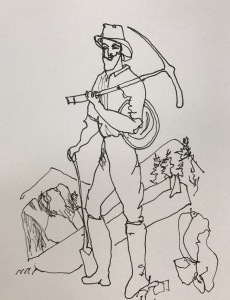
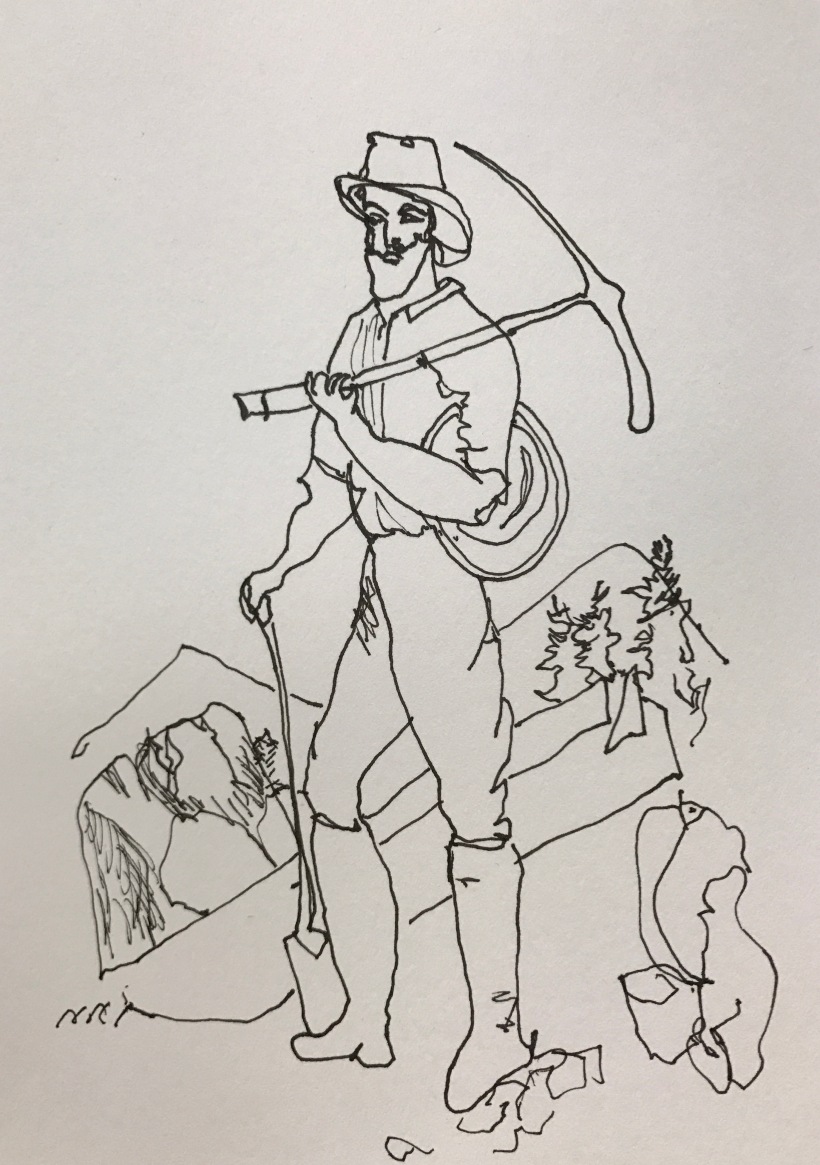
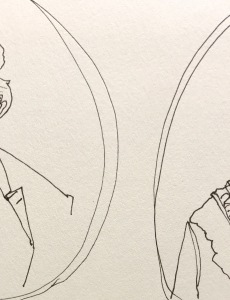
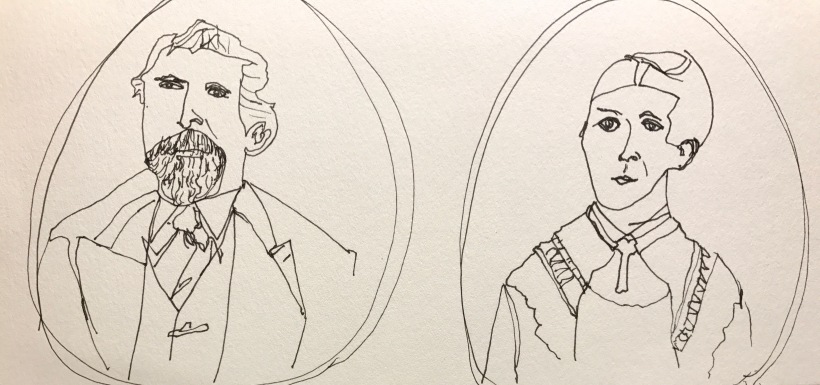
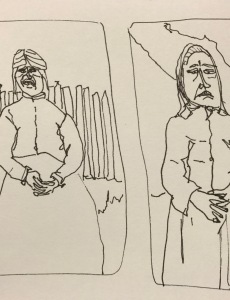
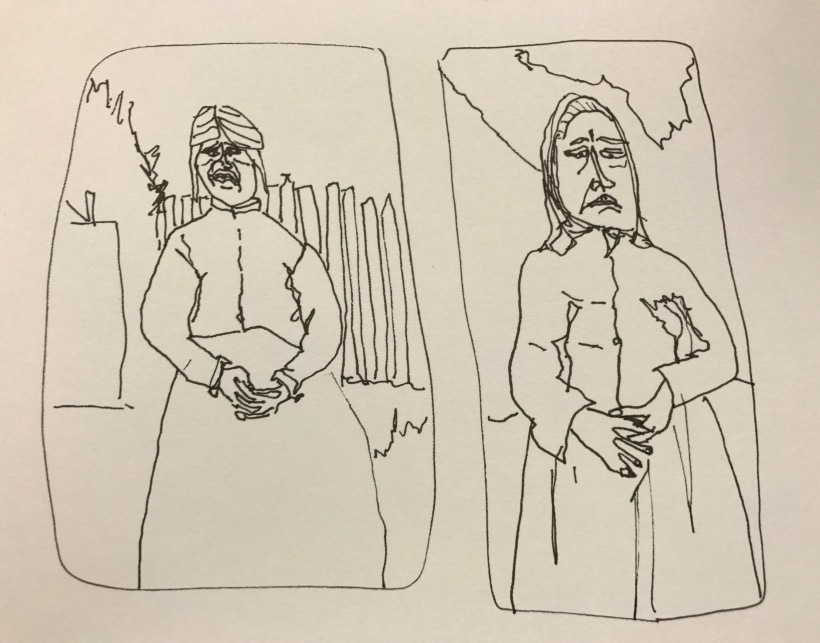
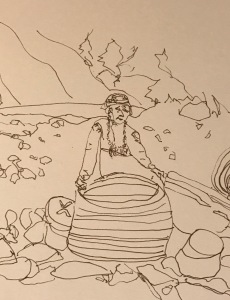
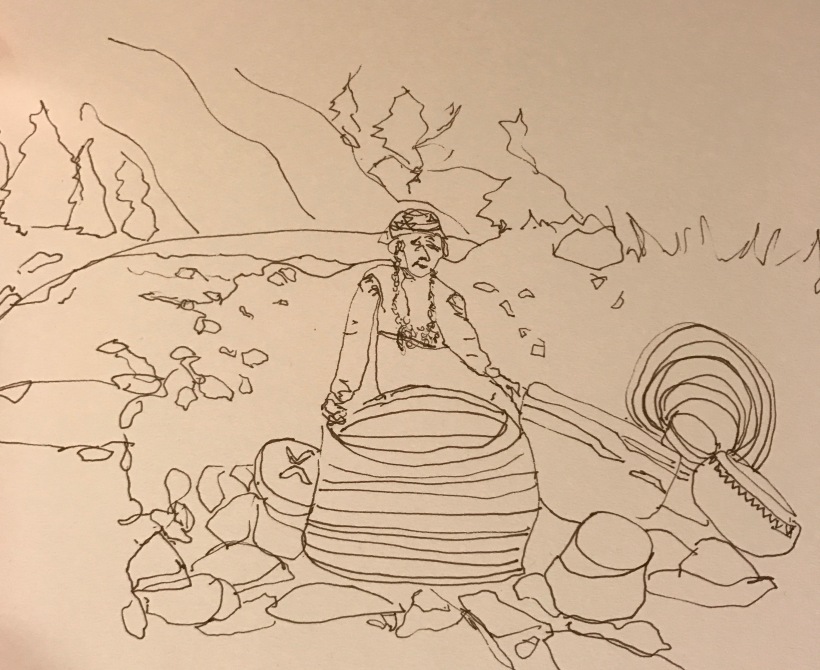
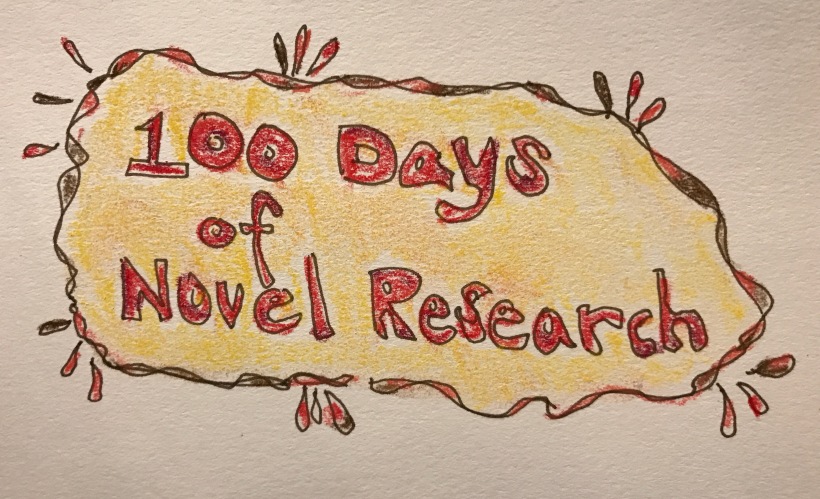 For the second year in a row, I’m taking part in “The 100 Day Project” through Elle Luna and The Great Discontent on Instagram. Starting today, April 4, I am joining people all over the world in doing one creative act every day for 100 consecutive days, and posting about it every day on Instagram. My project last year was “100 Days of Illustrating My Poems,” and it profoundly impacted my life by helping me give myself permission to draw daily and to share my work. I learned through that challenge that I’m capable of much more self expression than I had experienced, and I gained access to a bubbling inner spring of creativity.
For the second year in a row, I’m taking part in “The 100 Day Project” through Elle Luna and The Great Discontent on Instagram. Starting today, April 4, I am joining people all over the world in doing one creative act every day for 100 consecutive days, and posting about it every day on Instagram. My project last year was “100 Days of Illustrating My Poems,” and it profoundly impacted my life by helping me give myself permission to draw daily and to share my work. I learned through that challenge that I’m capable of much more self expression than I had experienced, and I gained access to a bubbling inner spring of creativity.